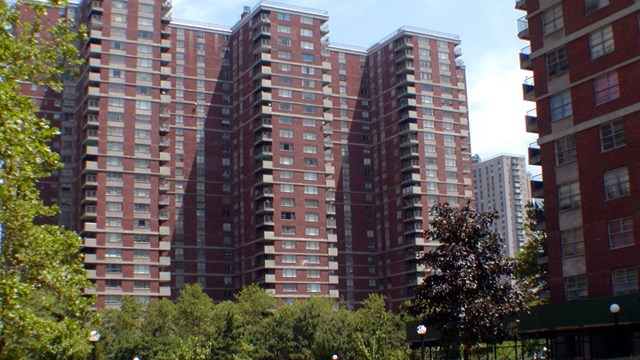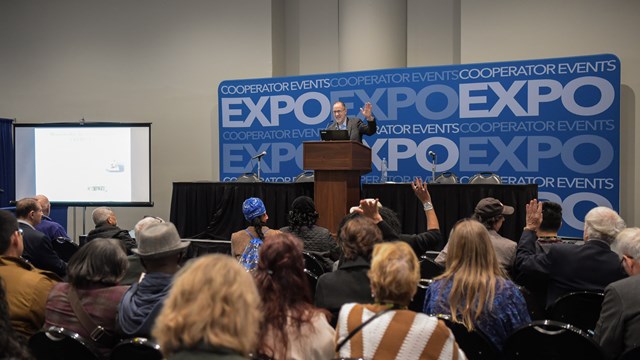The new millennium has taken the real estate industry for a pretty wild ride. Nothing but up, up and away have gone prices, with inventory availability down to a severe low, keeping it interesting. Yet real estate is a still hot commodity…and a solid investment. Despite last year’s nail-biting stock market fluctuations, patience-trying political transition and worry-provoking issues concerning the national economy, real estate has stood tall through it all, especially in major cities. In fact, economists say we’re enjoying one of the healthiest real estate markets in history, and anticipate no chance of a downward cycle within the next two years. Add to the mix solid job growth in major metro areas plus lowered interest rates to inspire even skeptical buyers, and you can bet real estate will continue to weather the storm as a top performer as predicted.
Take New York. Based on year-end 2000 sales statistics calculated by The Corcoran Group, there’s no question that Manhattan’s luxury real estate market will ever be the same! The astonishing renaissance of New York City has demonstrated its resilience to threats of sluggish economic conditions with phenomenal increases in the average sales price indices over 1999’s record high levels. One thing’s certain…owning NYC real estate is still the ultimate status symbol among ultra-status conscious New Yorkers. The past year may have been a roller coaster ride for Wall Street, but our real estate clients have remained extremely calm and confident.
Other cities nationwide are also experiencing similar trends and exceptional market strength. Let’s first look at New York City’s remarkable stats, then we’ll jet across country to see how other major cities stack up…
New York
It you can make it there, you can make it anywhere, right? Real estate growth made it big time in the Big Apple last year, setting the pace for our other big cities. We’re seeing several dichotomies in trends, however. First, there are still more buyers than sellers in the market. Buyers today have more cash to spend, yet seem more hesitant to commit than last year. Even those willing to take the plunge may have to wait, due to the still prevalent shortage of nice apartments (except for super-expensive properties over $10 million, which are readily available). While the days of wild bidding over asking price may be gone, competitive bidding on choice properties continues as an everyday occurrence. Prices are still on the rise but apartments are taking a bit longer to sell, with deal signing time also lagging somewhat.
Speaking of prices, they’ve increased by an extraordinary 21 to 23 percent in 2000! In the last five years so far, we’ve not only surpassed the price rise in 1980, but have soared beyond the similar increase during the five years prior to the 1987 stock market crash with a 76 vs. 61 precent hike! Strong demand for the Gotham lifestyle lead to a 30 percent decrease in buyer negotiability to a mere 2.6 percent off asking price. The greatest gains for cooperatives market-wide were made by one bedrooms, up 23 percent from 1999. West Side studio and one-bedroom sales prices overtook the East Side, averaging $166,000 and $319,000 respectively.
Market-wide, new construction condominiums continued to raise the ceiling and floor on all property values, as illustrated by the East Side average sale prices nearing $1.3 million, an astounding 45 percent increase over 1999. Feeding these record-breaking prices was the higher standard of luxury lavished on such apartments, often exceeding buyer expectations. In existing cooperatives, whether pre- or post-war, the prevalence of high quality renovations contributed to softening what initial buyer resistance may have existed.
Downtown lofts were gobbled up due to high demand, driving average loft sale prices up to over $1 million for the first time (11 percent higher than 1999). And the scarcity of townhouses ensured that those on the market would fetch premium prices. An average sale price per square-foot reached $782 made the East Side Manhattan’s most expensive form of living space.
Chicago
Residential sales figures in the Windy City have also blown through the roof. Chicago real estate has once again broken records for units sold, median prices and total volume for the seventh year in a row! As in New York, Chicago’s residential market is still holding strong. There are plenty of buyers looking, concerns over the economy have hindered quick commitments.
During the year 2000, Chicago realtors closed 28,260 units–that’s 194 more units than last year. The median selling price was $173,900, an 8.8 percent increase over 1999, with a total volume of $6.2 billion, a $678 million increase from a year ago. The average marketing time of 40 days was cut by 12 days since 1999.
Although the frantic pace of Chicago real estate did cool during the last quarter of 2000 due to talk of an economic slowdown and uncertainty surrounding the Presidential election, dropping interest rates should spur the market. Real estate is still a very good investment in the Chicago area overall; yet like Manhattan it’s still a "seller’s market," where demand still outpaces supply, causing rising prices and a decrease in average marketing time.
California
Right behind New York City run San Diego, Los Angeles and San Francisco as the country’s most expensive cities, which also basked in the glory of a hot real estate market. Residential real estate in California enjoyed one of its best years in three decades, with the median home price hitting a record high in 2000, and sales posting their second best year. Again, demand is amazingly strong, people have more spendable income for housing, yet inventory is limited.
The value of San Diego and Los Angeles luxury homes is still on the upswing, yet sales have balanced out. In San Diego, during the first quarter of 2000, the average value of a luxury home was $1,071,054, up 2 percent over the previous quarter, but 2.5 percent behind a year ago. In L.A., it was $1,103,742 this quarter, slightly ahead of last quarter and last year. Still, the values of these homes are still higher than two and three years ago. Also in 2000, prime areas commanded a whopping $1,094,000 average sale price for a two-bedroom apartment, right behind New York’s $1,589,000. Comparably, Los Angeles came in next at $947,000, followed by San Francisco at $925,000.
In Northern California, prices continue to escalate, yet some areas have suffered double-digit sales declines. Homebuyers’ queasiness about economic sluggishness was reflected in the sales pace, particularly in the San Francisco Bay Area. The frenzied pace of home sales and outlandish bidding wars of the last few years as the dot-com economy boomed is shifting to a more sustainable level of activity. Yet the Bay Area–already home to the nation’s most expensive housing–enters the fifth year of a real estate boom cycle still gaining momentum.
Miami
More international buyers from South America and Europe, along with empty nesters, move-up buyers and people flocking into the state, continued to fuel Florida’s unaffected real estate boom. Buying there is a phenomenal investment because the projected home appreciation rate is as high as 6.7 percent in areas across the state. In the last quarter of 2000, home sales were especially strong in the Miami metropolitan area, where 2,928 homes sold for a five percent increase over the prior quarter. Prices hold high while inventory remains low on Miami Beach, as its fast become the gateway to Latin America as well as an attractive international business center.
And the list goes on…
Boston too is primed for premium prices. From Back Bay to the Greater Boston area, apartment buyers should expect to pay anywhere from $180,000 for a one-bedroom to $750,000 and up for townhomes. The average unit list price in Beantown is $660,000. Beacon Hill and Back Bay properties are going for the million-and-a-half range.
For home sellers in Texas, these have also been great years. For the first time, the Texas median sales price exceeded $100,000 in 1999, then rose another eight percent in 2000. Moderate economic growth and market activity are also expected for the coming year, as is an anticipated population growth. To accommodate the numbers, about 90,000 single-family homes need to be built every year from 2000 to 2005–projections less than 1999 but higher than the previous eight years.
Words of Advice
Sellers, don’t overprice your apartments, just because you think you can. It won’t work. Buyers will think twice, brokers will show against you, and your chances of selling will be reduced since the show-to-bid rate is seven to one. Buyers, it’s always a good time to buy. A home is a home first, and an investment second. Real estate sales are much more stable and slow moving than the stock market. Don’t sharp shoot–take your time to buy right.
Ms. Corcoran is chairman and founder of The Corcoran Group Real Estate.






Leave a Comment